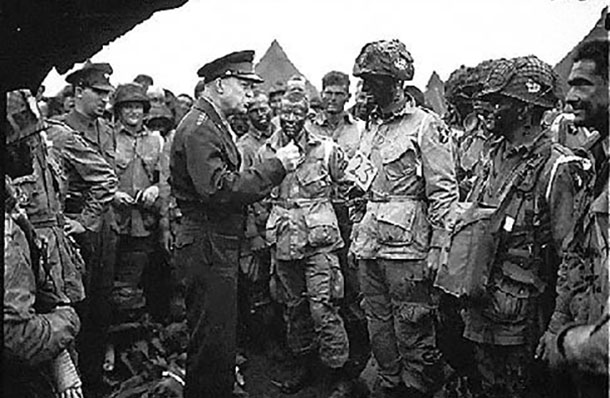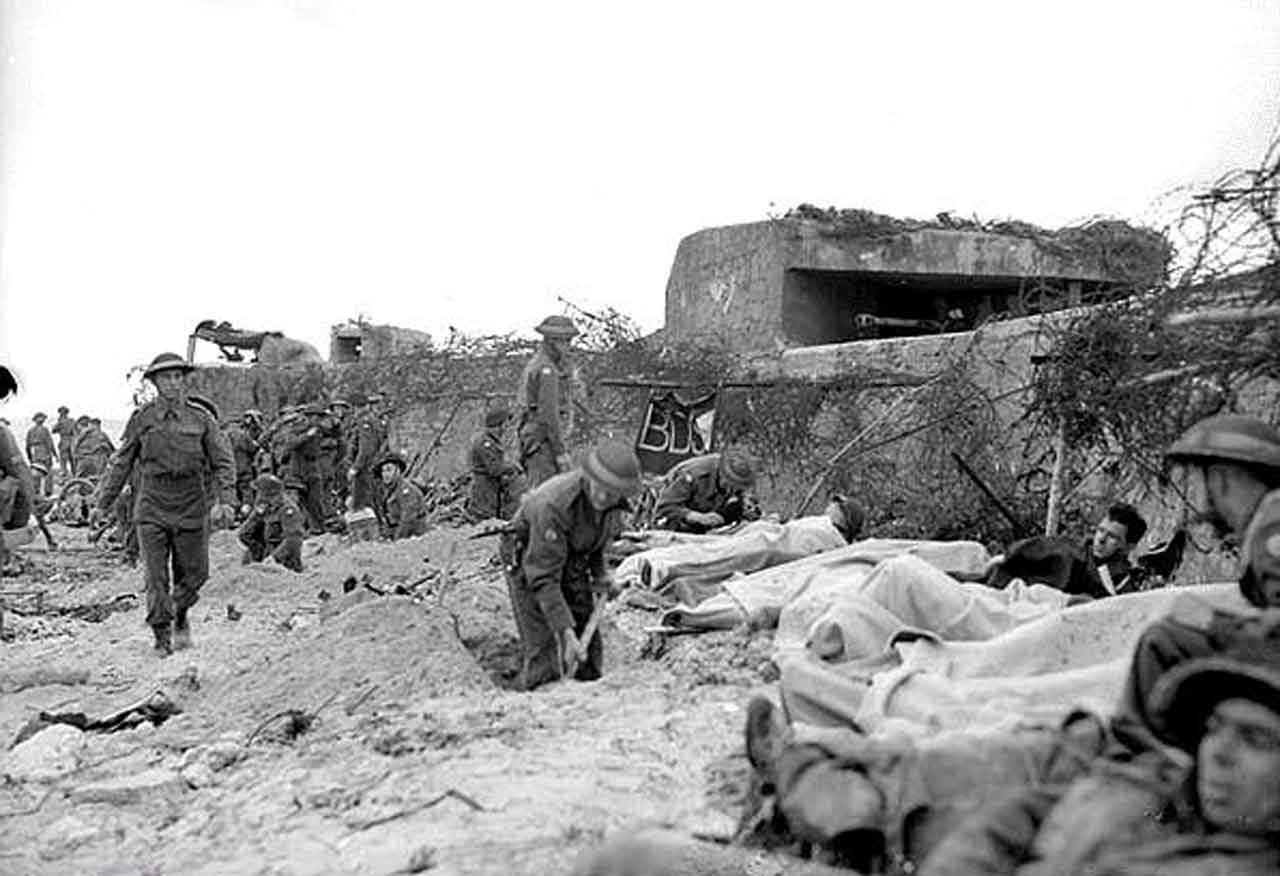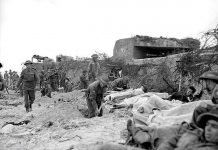June 6, 1944, known as D-Day, marks one of the most significant turning points in World War II. On this day, the Allied forces launched an ambitious and risky amphibious invasion on the beaches of Normandy, France.
This operation marked the beginning of the end for Adolf Hitler’s Nazi regime, laying the groundwork for the eventual Allied victory in Europe. Yet, beyond the headlines, there are several lesser-known facts and stories that paint a fuller picture of this historic event.
The D-Day Landings: An Overview
The objective of the operation, code-named “Overlord,” was to establish a secure foothold in Western Europe, which would then serve as a springboard for a full-scale invasion of Germany.
The operation involved troops from the United States, United Kingdom, Canada, Free France, and other Allied countries. The forces were set to land on five main beaches along the Normandy coast: Utah, Omaha, Gold, Juno, and Sword. C. Each of these beaches had its unique challenges and stories, but they all shared the common goal of breaking through the formidable German defences known as the Atlantic Wall.
Preparations for D-Day
Operation Bodyguard was the code-name for the strategic planning and deception techniques used to mislead the Germans about the location and timing of the invasion.
The invasion initially planned for June 5 was postponed due to poor weather conditions. The decision to proceed on June 6 was largely based on weather forecasts.
Double agents, such as Juan Pujol Garcia (code-named “Garbo”), played a critical role in feeding misinformation to the Germans, contributing significantly to the success of the invasion.
The Lesser-Known Facts of D-Day
The French Resistance played a significant role in sabotaging German communications and providing valuable intelligence to the Allies.
The invasion saw the deployment of “Hobart’s Funnies” – specialized military vehicles designed to overcome the beach defences. These included tanks equipped to destroy obstacles, create smoke screens, and even lay out portable roadways.
The first news reports of the D-Day invasion were broadcast by German short-wave radio broadcasts to North America. They were picked up by the Columbia Broadcasting Service (CBS), and the National Broadcasting Corporation (NBC) who stayed on the air reporting what they could until there was confirmation from Allied sources.
The German leader Adolf Hitler had stayed up late, reportedly watching a movie. As the Allied paratroopers started landing and in the morning as troops started coming ashore, the German High Command did not want to wake Hitler mainly out of fear of one of his increasingly frequent tirades and they were fearful of being blamed.
The German leader was convinced that the Allied landings in Normandy were a distraction. Hitler was convinced that the actual invasion would happen at the Pas de Calais, the shortest distance from Britain to France.
General George S. Patton, one of the most famous military figures from the United States during World War II, did not directly participate in the D-Day invasion. However, his role was crucial in a strategic sense because he was used as a decoy to deceive the Germans about the true location of the invasion.
In the months leading up to D-Day, the Allies carried out a complex deception plan known as Operation Fortitude. The goal of this operation was to convince the Germans that the main invasion would occur at Pas-de-Calais, the narrowest point between Britain and France, rather than Normandy. As part of this plan, the Allies set up a fictitious army group, the First United States Army Group (FUSAG), supposedly located in southeastern England and poised to strike at Pas-de-Calais. Patton was placed in command of this phantom army.
The Germans respected Patton’s aggressive and successful leadership style, and they considered him the Allies’ best commander. Seeing Patton in charge of FUSAG, they believed that this was indeed the main invasion force. This deception was so successful that even after D-Day, the Germans kept significant forces in the Pas-de-Calais region for several weeks, waiting for the “real” invasion.
The 320th Barrage Balloon Battalion, the only African-American combat unit to land on D-Day, played a crucial role in protecting the landing forces from low-level air attacks.
The “Mulberry Harbours” were artificial harbours constructed to aid in the unloading of cargo onto the beaches.
The story of the “Bedford Boys” highlights the scale of human loss during the invasion. Of the 30 soldiers from Bedford, Virginia, who landed on D-Day, 19 were killed in the first few hours.

Paratroopers played a vital role in the operation. Some paratroopers were accidentally dropped in wrong locations due to navigational errors, but they adapted and ended up causing confusion among German forces, inadvertently aiding the mission.

On D-Day, nearly 150,000 Allied troops landed or parachuted into the invasion area, including 14,000 Canadians at Juno Beach. In support of this operation, the Royal Canadian Navy contributed 110 ships and 10,000 sailors, while the Royal Canadian Air Force (RCAF) provided 15 fighter and fighter-bomber squadrons.
As for casualties, on D-Day alone, the total Allied casualties exceeded 10,000, including 1,074 Canadians, of whom 359 were killed. By the end of the Battle of Normandy, the Allies had suffered 209,000 casualties, including more than 18,700 Canadians. Over 5,000 Canadian soldiers died during the Battle of Normandy.
The Aftermath of D-Day and its Impact on World War II
The operation resulted in heavy casualties, with estimates ranging from 4,000 to 9,000 Allied soldiers killed or wounded. However, it also inflicted significant damage on the German forces and weakened their hold on Western Europe. B. The successful establishment of a beachhead in Normandy allowed the Allies to push further into German-occupied territory, leading to the eventual liberation of Paris in August 1944. C. D-Day was a significant blow to Hitler’s Nazi regime and marked a critical turning point in World War II. It changed the course of the war# I need to find more recent information about D-Day’s legacy and commemorations. search(“D-Day commemorations and legacy”)
The Legacy and Commemorations of D-Day
D-Day is commemorated each year with various activities such as parachute drops over Normandy towns like Sainte-Mere-Eglise, a tribute to the paratroopers who played a crucial role in the operation1.
The Normandy American Cemetery, where more than 9,000 U.S. troops rest in peace, serves as a sobering reminder of the epic battle. The endless rows of white stone crosses and Stars of David overlook Omaha Beach, which is now a tranquil site, making it hard to imagine the intense battle that took place there1.
The significance of D-Day is emphasized through these commemorations, reminding people of the achievements and sacrifices that led to the liberation of France and, eventually, the end of World War II in Europe1.
The legacy of D-Day continues to shape the relationships between the U.S. and its European partners, ensuring a peaceful Europe thanks to the sacrifices of the soldiers who landed in Normandy over seven decades ago1.
As stated by Air Force Capt. Kyle Foley, the sacrifices of the Allies in the Battle of Normandy changed the course of history, transforming Europe and shaping relationships with allies across the world. It was a significant event in the 1940s, and it continues to hold its importance in the current era, and will continue to do so in the future1.
Conclusion
The D-Day landings on June 6, 1944, hold a significant place in history. Not only did they mark the start of the final stages of World War II, but they also demonstrated the power of international cooperation and the indomitable spirit of freedom.
While the broad strokes of D-Day are well-known, the smaller, lesser-known stories provide a richer understanding of this monumental event. From the role of the French Resistance and the deployment of Hobart’s Funnies to the impact of Operation Bodyguard and the sacrifices of the Bedford Boys, every facet contributes to the complex tapestry of D-Day.
Today, we remember and honour the sacrifices of the soldiers who fought and died on the beaches of Normandy. Their bravery and determination played a critical role in ending one of the darkest periods in human history, and their legacy continues to influence our world today.






